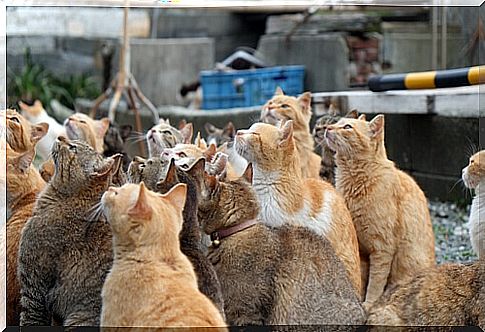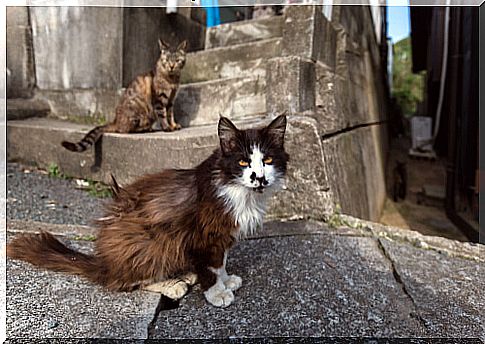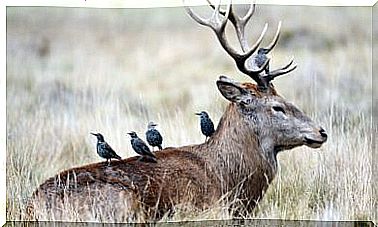The Cat Islands In Japan

On the coast of Japan there are a few islands with many more feline inhabitants than humans: they are the so-called cat islands. They are very prominent tourist destinations, but they may not be as happy as they seem at first glance. We invite you to visit Aoshima, one of the cat islands in Japan.
Where are the cat islands located
Aoshima is one of the best-known cat islands in Japan. Barely 15 people live on it and, on the other hand, there are more than 100 cats. This island is located in the Ehime prefecture, in the south of the country.
Another of the best-known cat islands is Tashirojima, which receives about 10,000 visitors a year. It is located in Miyagi Prefecture, in the northern third of the country and much closer to the coast than Aoshima.
In both cases it is necessary to travel by boat from the main island of the country. The trips depend on many factors, but both trips last about half an hour. Hours vary according to the seasons and the influx of visitors, but are usually limited to a couple of daily tours.
How has he come to have so many cats
The greatest attraction that these places have is the enormous abundance of cats that live in them. In the case of Aoshima, it is estimated that there are six cats for every inhabitant. These animals, which depend on humans for food, since there is not enough prey to hunt on their own, are very docile and friendly.
They are used to the presence of unknown people on the island, thanks to the influx of tourists. They know how to pose for photographs and get tourists to feed them; They are not, therefore, like the usual stray cats that we find in other parts of the world.

Visitors who come to these places find a postcard difficult to find anywhere else in the world: hundreds of friendly cats that are easily photographed and also ask to interact with people.
The cat islands are faced with a difficult dilemma to solve: the presence of tourists, who feed the cats, has allowed their population to grow uncontrollably. However, tourists do not leave economic or human resources to keep this population healthy, sterilized and well fed.
Caregivers on the cat islands
As many of the people who visit these places assure, many of these cats are affected by common and easily treatable diseases. The most frequent are respiratory and eye infections, although there are wounds, skin problems and many other problems derived from these.
In addition, no one has been in charge of sterilizing the cats that live in them, so litters continue to be born continuously and the feline population in the cat islands will continue to grow.
For a few years, groups of volunteers who do not reside on the islands have been traveling to them to treat the animals, and have launched a modest CES project (Capture, Sterilization and Release). Despite their efforts, their financial capacity is not enough to care for all the cats that live in these places.

When asked how to improve the quality of life of these felines, one of the visitors to these places declared for a magazine that he was doing a report:
The impact of tourism
In fact, in these islands the presence of foreigners who brought food has allowed cat populations to grow until they become another tourist attraction. The more people visit the island, the more food available the cats have, so they continue to reproduce.
The presence of people in the cat islands by itself does not ensure, however, the health of these animals, the hygienic control of the places where they live or their veterinary care. It is a vicious circle in which, if tourism is made to disappear, cats will stop having food, but, if tourism is not controlled, cats will continue to multiply.
Aoshima and Tashirojima are not the only places where this occurs: more than a dozen islands have been counted in the same situation in Japan alone. There are other tourist destinations where the populations of monkeys or seagulls, for example, have gotten out of control thanks to the abundance of food.
Tourists visiting these destinations should be aware of the impact of their presence anywhere in the world. It is possible to do responsible and ecological tourism, and enjoy the wonders of the flora and fauna of our planet without negatively affecting it.









